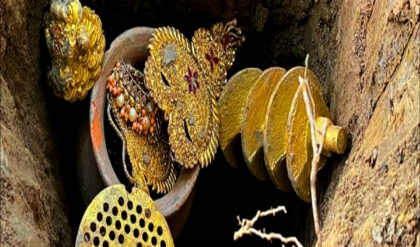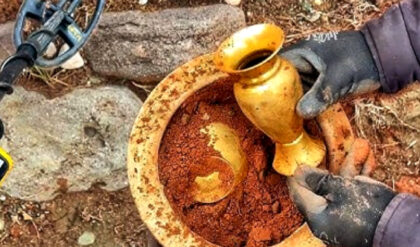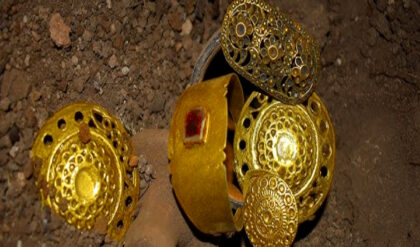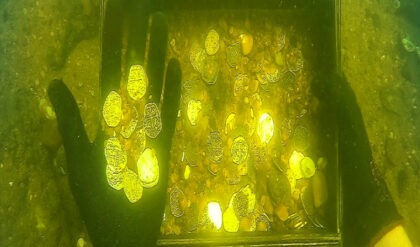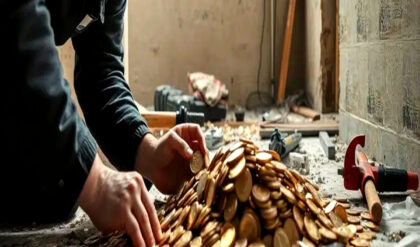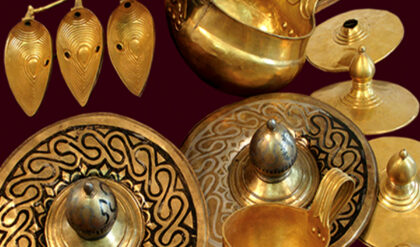The discovery was made by archaeologist Dr. Martina Barcelona in Aswan, a city with historical importance that sits on the Nile.
She was leading a Spanish research team investigating the reign of Hatshepsut, the first female ruler of Egypt when they discovered an unprecedented tomb in the cliffs. Channel 4’s “Secrets of Egypt’s Valley of the Kings” revealed how experts delicately excavated the unique tomb before they broke into, making an incredible development in our understanding of the tomb before they broke into, unraveling secrets of its undiscovered tombs.
The narrator said: “Martina’s found a coffin that’s remained hidden for millennia.
“But first, she has to get to the tomb – a Sahara sands storm is blowing in from the south.
“As the sandsstorm reaches full force, even the 200-meter journey to the burial is a battle.
“In the shelter of the tomb, the team can now carefully remove the lid of the sarcophagus coffin.
“They are about to find out whether anything has survived after nearly 4,000 years.”
As the expert attempted to remove the coffin, she appeared shaken by its appearance.
She said: “It’s very heavy, but beautifully, it looks very scary.
“It’s like a scary movie, if this mummy is moving, I’m going as fast as [I] can.”
“It’s a very ugly mummy – it’s not really a mummy – just that it was simply put here, but not well bandaged.”
The series detailed how more experts were brought in to get a better understanding of the find.
It added: “The sarcophagus coffin contains no mummy but a skeleton shrouded in black material.
“One expert Dr. Miguel Cecilio Botella Lopez has arrived to analyse the skeleton.
“They hope to find out who this person was and how they prepared for the afterlife.”
After he took off the bandages, Dr. Botella revealed to the team it was a woman.
He added: “I’m sure it’s a woman. The age, I’m not sure, but more than 70.”
The team were left baffled by his estimate as people in ancient Egypt did not grow very old.
Very high infant death rates due to high risks of infectious diseases resulted in a low average life expectancy.
However, those who survived childhood lived for slightly longer compared to the low average life expectancy.
Dr. Bardoonova continued in 2019: “The average age at life expectancy was about 25, but for more women died during childbirth.
“When you have someone who is over 70, I don’t want to say I’m surprised, but it’s nice to know, it’s nice to get someone who’s really old.”
Tutankhamun is one of the most famous of all ancient Egyptian pharaohs, but he is believed to have only lived to 18.
Human remains are primary sources used to calculate age at death and life-expectancy as they are found written about and visualized in archaeological contexts.
Occasionally, the age at death can be found as an inscription part of the mummy labels attached to the bodies.
Secondary evidence of aging includes dental occlusion patterns where they sometimes have restored to the person as “aged”.
In ancient Egypt, elders were depicted as older adults who were no longer able to contribute labor around the household.
Egyptian writings indicate a social norm of respect for the elderly but there was no special position in society for the elderly.
